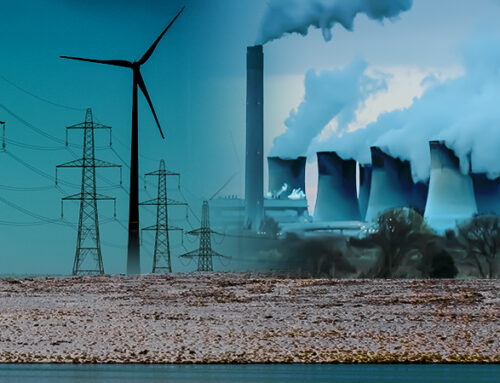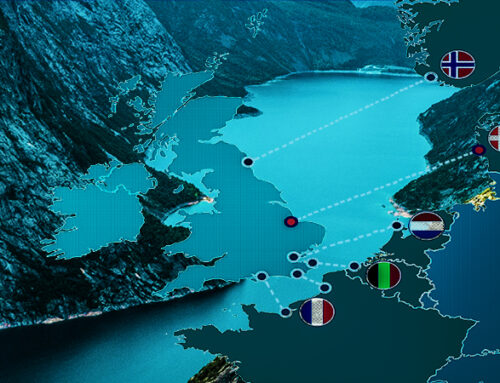Retail price caps continue to make the news, as “dealing” with rising energy prices is seen as a popular move in the run up to the General Election. As has now been argued many times, including in this blog, price caps are unlikely to be beneficial, with many unintended adverse consequences likely. The question is, what can or should be done to address the issue.
In 2016, the Competition and Markets Authority investigated whether the energy markets truly competitive, and concluded that they are not in fact functioning properly. While no evidence of collusive behaviour among the Big 6 was found, the CMA identified poor consumer engagement that is allowing suppliers, and in particular the Big 6, to have significant market power over in-active customers who do not switch suppliers or seek to change to cheaper tariffs offered by their own suppliers. The CMA effectively found that such consumers are being exploited by suppliers who are able to charge them more to subsidise attractive rates for new customers.
Has de-regulation failed?
De-regulation was intended to deliver two main benefits. One was greater efficiency by placing assets and consumers in the hands of private enterprises rather than the state. The other was an improved consumer experience by opening the market to competition, with energy suppliers competing on the basis of price and overall customer service.
In the early years of de-regulation, the former objective was largely met, however the second objective would seem, anecdotally, to be a failure, not least because the market is dominated by a group of vertically integrated entities known as the “Big 6″, which emerged in the period of consolidation which followed de-regulation.
Energy companies are widely reviled for poor customer services following disastrous “upgrades” to their billing systems in recent years. This problem has been compounded by the requirement for them to install smart meters prematurely, leaving many consumers with smart meters that are not in fact smart.

The other major problem is that prices are rising, with tariff increases often being announced by the major suppliers at broadly the same time. The entry of new suppliers into the market has not had a major impact on prices, and as the chart shows, it is difficult for other suppliers to undercut the Big 6 in a significant way for sustained periods. The growing impact of environmental and social policy costs on bills is fundamentally anti-competitive, reducing the ability of suppliers to differentiate themselves on price, as described in this post. This problem is set to get worse as these external costs are forecast to grow.
What factors inhibit the entry and success of new suppliers?
According to Ofgem, there were 52 active suppliers in the domestic segment at the end of 2016. The combined market share of the Big 6 continued its downward trend, falling to 84% and 85% for gas and electricity respectively at the end of Q4 2016.

The number of market participants is one thing, but if new entrants are to thrive they need to acquire customers from more established players. Switching levels remain low, but are growing, with a 25% increase in domestic switching in the year to February 2017, representing 107,000 and 85,000 points for electricity and gas respectively.
Part of the reason for low switching levels is generally low engagement in the energy sector:

The dominance of the market by the Big 6 has been a cause for concern for some time. While the CMA report rejected the hypothesis that the Big 6 were a cartel exercising market power at the expense of small consumers, there are ongoing concerns that the structure of the market itself inhibits the success of new entrants, and their ability to profitably gain sustainable market share.
This 2011 report by Frontier Economics laid out the key issues, many of which were still identified as enduring in this 2014 paper by Sheffield University:
Measures to address some of these barriers are having some degree of success, but progress is very slow as the Big 6 still represent 84% of the market. Further action is needed to enable new suppliers with new business models to gain traction in the market, and the government and regulators can assist in the following way:
- Removing the costs of environmental and social policies from bills;
- Simplifying out-dated regulatory structures, and creating a new government agency whose role is to enable new entrants to navigate the regulatory landscape;
- Developing innovative means of allowing new entrants to access lower cost working capital for collateral obligations, potentially by extending credit facilities linked to the government’s cost of borrowing rather than the firm’s cost of borrowing;
- Implementing public service advertising campaigns targeting disengaged consumers to inform them of the benefits of switching;
- Regulating both suppliers and energy price comparison websites to make tariff offers more transparent.
Is more competition the answer?
It’s difficult to argue that more competition would be a bad thing, but the question is whether more competition alone will solve the issue of inactive consumers, which would seem unlikely. New entrants can try to engage with potential new customers, but where consumers are intractably unable or unwilling to engage with their own energy consumption, it is hard to see what actions suppliers can make to change this approach.
While it may be tempting to insist on caveat emptor and say these consumers are the authors of their own misfortune, in reality, many of these consumers are vulnerable and an equitable society should seek to protect them.
This inevitably leads to the question of price regulation, forbidding suppliers from exploitative pricing practices through the establishment of outright or relative price caps. As I discussed in my previous post, caps are a very blunt instrument which are unlikely to work, and indeed, the CMA proposed a number of remedies none of which involved the imposition of price caps.
The main focus of the CMA’s proposals was the sharing of data relating to inactive customers so that rival suppliers could target them with attractive tariff offers. There are obvious issues with data privacy, and the opt-out required to satisfy these concerns seems weak as dis-engaged customers are unlikely to become engaged for the sole purpose of protecting their privacy if cost savings have previously failed to motivate them.
It also remains to be seen whether an inactive customer would become active based on marketing approaches from competing suppliers. The CMA identified individuals who are on low incomes, have low qualifications, live in rented accommodation or who are above 65 are less likely to be engaged in the energy markets. Reaching these customer groups requires significant marketing investment – as noted above, new entrant suppliers struggle to compete with the Big 6 on spend and reach.
The CMA identified further barriers to engagement around lack of quality differentiation as the electricity provided by one supplier is identical in quality terms to that provided by a competitor; and lack of usage transparency due to inaccurate and inaccessible meters. It seems to be a somewhat heroic assumption that disengaged customers would increase their engagement by having smart meters though, as many of the barriers to engagement listed above would not be improved by more accurate or granular consumption data.
Instead, an opportunity exists for suppliers to re-frame the delivery of gas and electricity supplies entirely. As I described in my article about future energy markets, if retail energy was provided as a service where customers paid for agreed levels of comfort rather than kilowatt-hours, it might be easier to engage with even currently inactive consumer segments. New entrants with new, service-oriented business models, need to be encouraged into the market, and the actions described above would go some way to supporting this.
In the meantime, by removing the costs of environmental and social policies and requiring greater transparency and simplification of tariff structures, the government can reduce the burden of high energy prices on vulnerable consumers, as well as reducing a major factor inhibiting effective competition in the market. Increasing transparency should reduce some of the barriers to engagement, and removing environmental and social costs from bills will reduce the economic impact of being inactive. Price caps are not the answer.







Leave A Comment